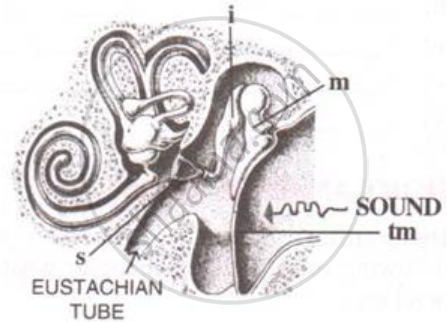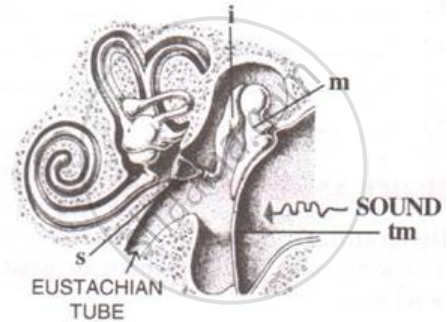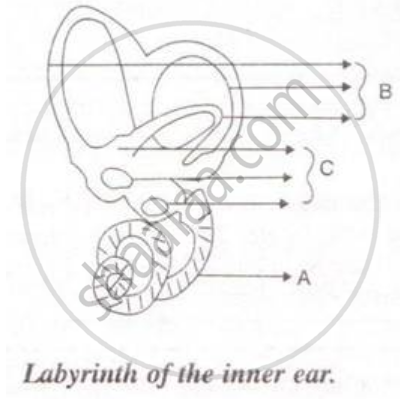Advertisements
Advertisements
प्रश्न
State the Location:
Semicircular canals
उत्तर
Semicircular canals: In the internal ear.
APPEARS IN
संबंधित प्रश्न
Lightning and thunder take place in the sky at the same time and at the same distance from us. Lightning is seen earlier and thunder is heard later. Can you explain?
Deafness is causal due to the rupturing of the Pinna.
(i) Draw a well labelled diagram of the membranous labyrinth found in the inner ear.
(ii) Based on the diagram drawn above in (i) give a suitable term for each of the following descriptions :
1. The sensory cells that helps in hearing.
2. The part that is responsible for static balance of the body.
3. The membrane covered opening that connects the middle ear to the inner ear.
4. The fluid present in the middle chamber of cochlea.
5. The structure that maintains dynamic equilibrium of the body.
fill in the blanks with suitable functions: Ciliary body and __________.
State the main function of the Suspensory ligament of the eye
What is the function of three tiny bones in the ear ?
The diagram alongside represents the structure of the human ear.
(i) Write the names of the parts labelled a to g.
(ii) State briefly the functions of the parts b, d, and g.
(iii) Name the main division of the ear.
(iv) Which is the smallest bone in the human body?
(v) What is labyrinth?

The figure below is the sectional view of a part of the skull showing a sense organ:

What are the parts labeled 'm', 'i' and 's'? What do these parts constitute collectively?
The figure below is the sectional view of a part of the skull showing a sense organ:

What do you call the part shown in the form of a spiral? What is its function?
Given below is a diagram of a part of the human ear. Study the same and answer the question that follow:

Name the parts labeled A, B and C in the diagram.
The following diagram refers to the ear of a mammal.

(i) Label the parts 1 to 10 to which the guidelines point.
(ii) Which structure:
(a) converts sound waves into mechanical vibrations?
(b) Converts vibrations into nerve impulses?
(c) Responds to change in position?
(d) Transmits impulses to the brain?
(e) Equalizes atmospheric pressure and pressure in the ear.
Given below is the diagram of the human ear. Study the diagram and then answer the questions that follow:

(i) What role does the eardrum play in hearing?
(ii) What common term is given to the parts labeled A, B, and E?
(iii) Would there be any difference if these three parts mentioned in (ii) above were replaced by one by one? Why?
(iv) Give the biological term for the parts labeled C and D.
(v) Name the fluid which fills the parts mentioned in (iv) above.
(vi) State the functions of the ear.
Mention, if the following statement is True or False
The part of ear associated with balance is the cochlea.
Name the three ossicles of the middle ear.
Describe the structure and function of the human ear?
The part of the ear that turns pressure variations into electrical signals is ______.
Note the relationship between the first two words and suggest the suitable word/words for the fourth place.
Eyes: Photoreceptors :: Ears : ______.
With reference to human ear answer the question that follow:
Name the part of the ear associated with dynamic balance.
